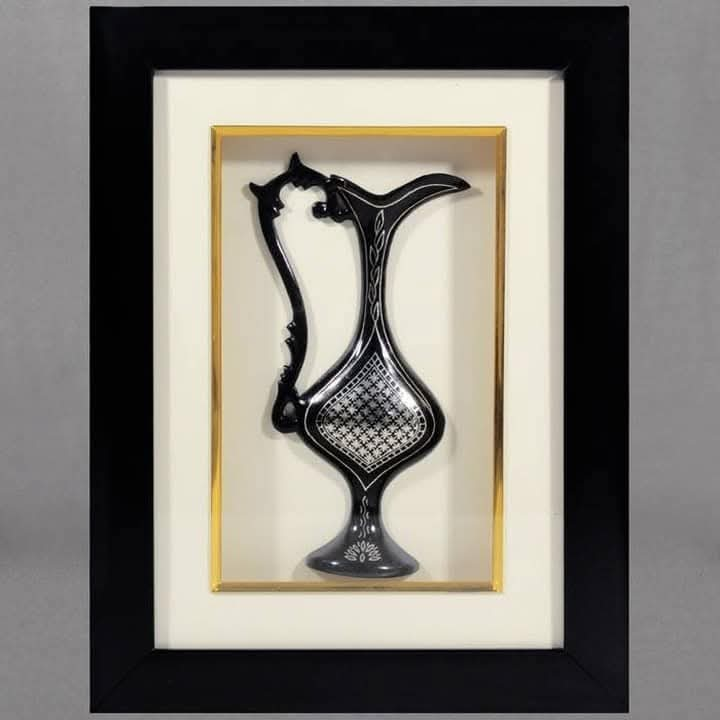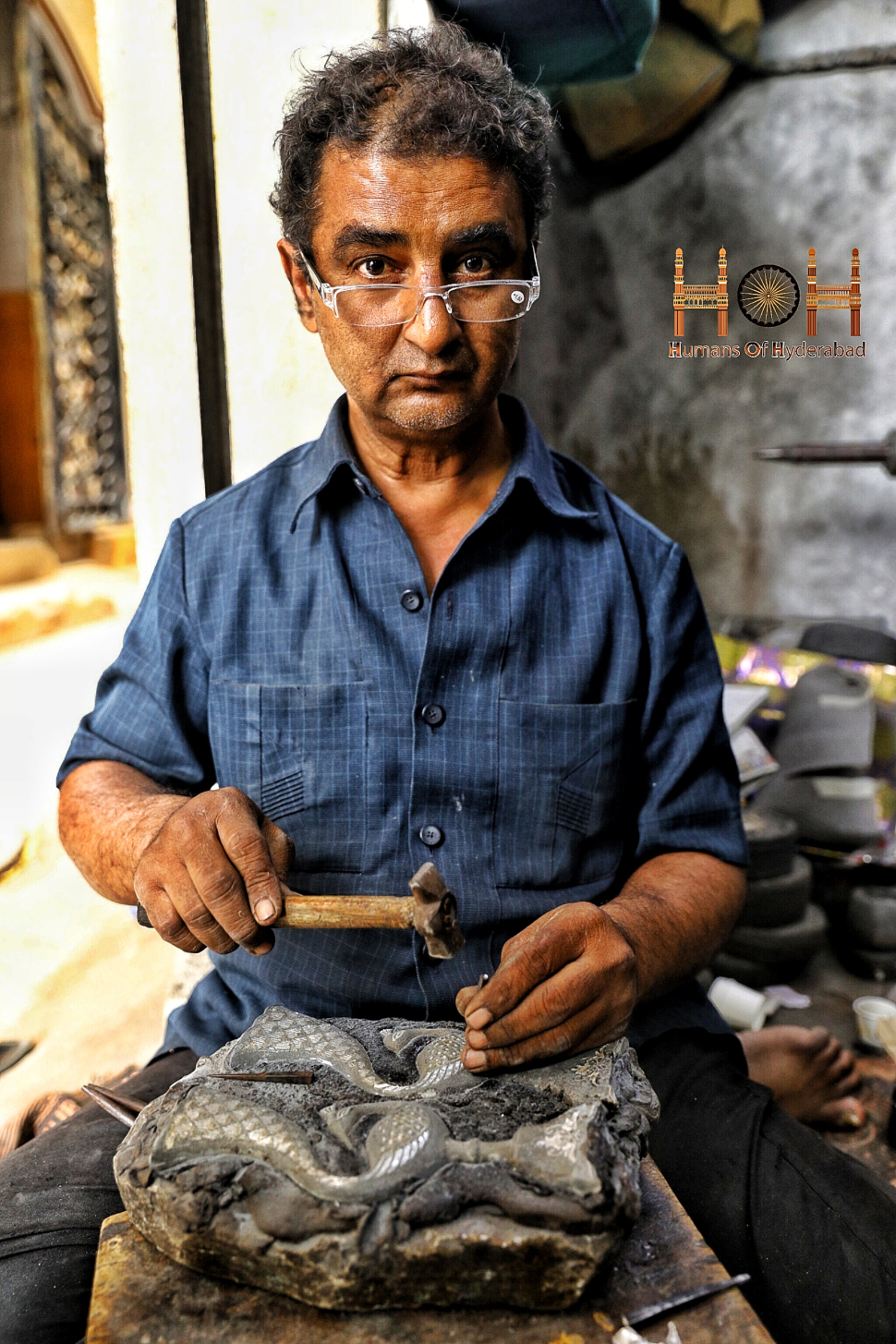“I am one of the few artisans in Hyderabad still working with Bidri craft. This metal inlay tradition came to the Deccan from Persia centuries ago and took shape in Bidar in the 14th century. Over time, the craft reached Hyderabad as artisans moved here, especially when the Nizams supported workshops and encouraged skilled makers.
I learned this work from my grandfather and father. In our process, we start with an alloy of zinc and copper. We carve the design by hand, inlay pure silver into the grooves, and finally apply a special soil mixture that turns the surface black so the silver shines clearly. This soil is collected from specific spots in Bidar and is important for the finish that Bidri is known for.

The patterns I make are the same ones passed down in our family—floral vines, curved and straight borders, star shapes, jali-inspired grids, paisleys, and peacocks. Some designs also carry Deccan architectural elements like arches and domes. Over the years, people ordered decorative boxes, vases, paandan boxes, plates, and gift pieces for homes and special occasions.

There was a time when Bidri work had steady demand. People valued the effort and the cost of silver didn’t feel heavy because the craft was appreciated.
Today, things are tougher. Silver prices have risen sharply, the special soil has become harder to source, and factory-made pieces have reduced interest in handmade work. We have requested support to train new artisans and keep this 600-year-old craft alive, but the response has been limited.
Even so, I continue this work every day. This craft has been part of my family for generations, and I feel responsible for preserving it in Hyderabad. As long as my hands allow, I want to keep making Bidri pieces.”
— Khaleel Ahmed, Bidri artisan, Dabeerpura, Hyderabad
